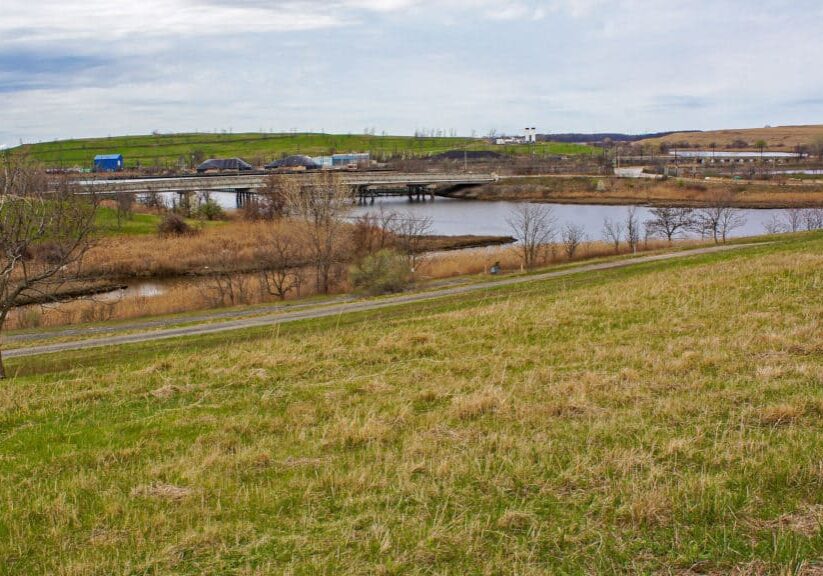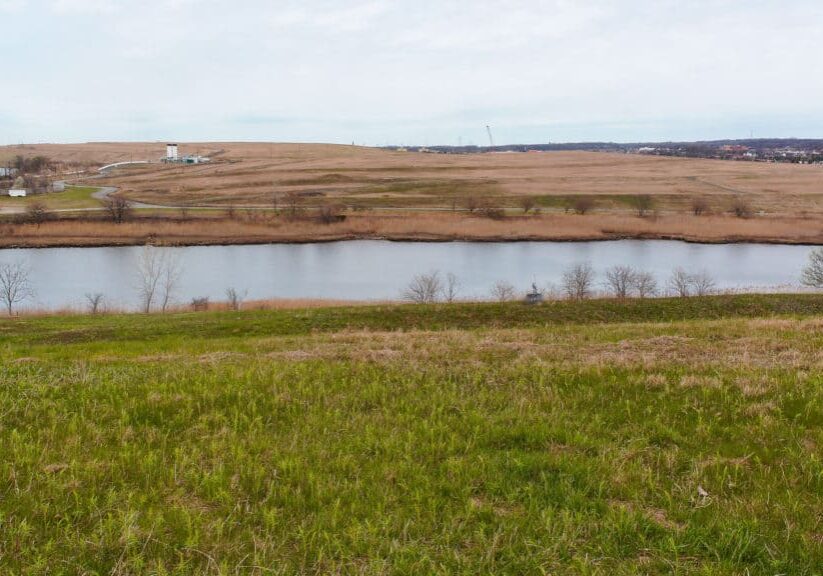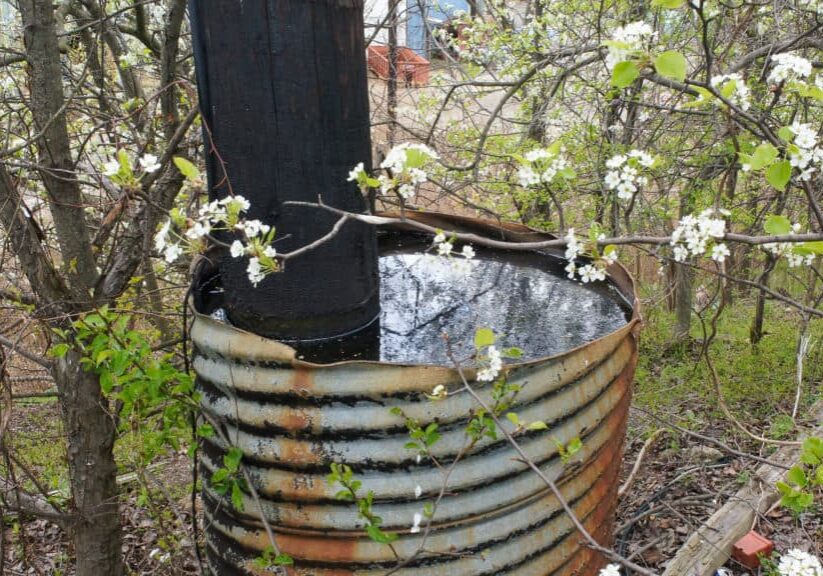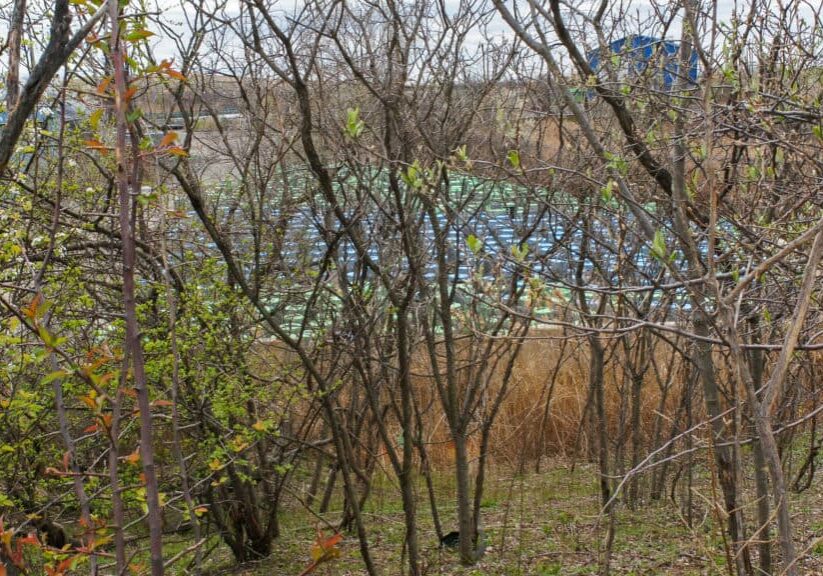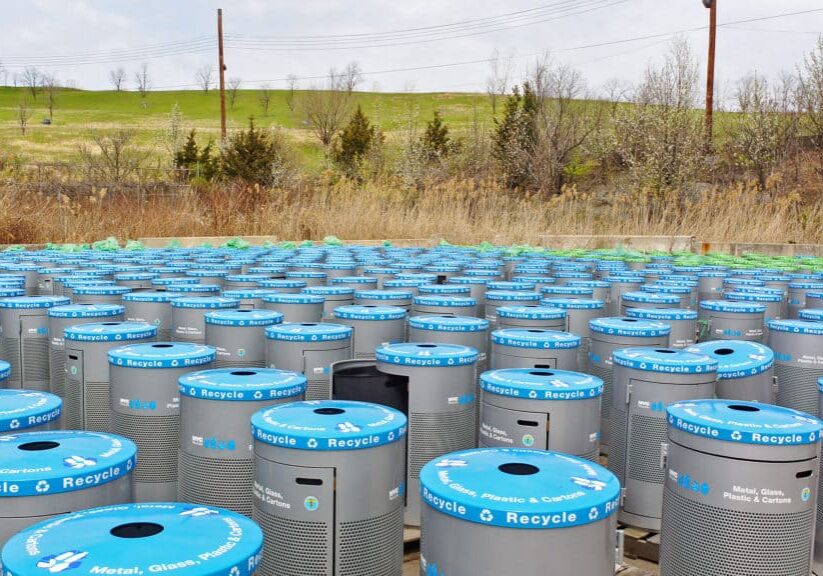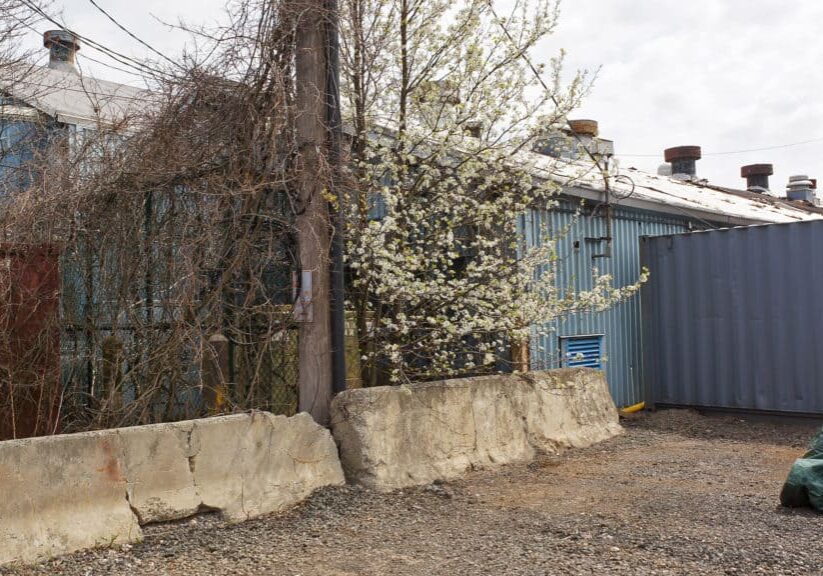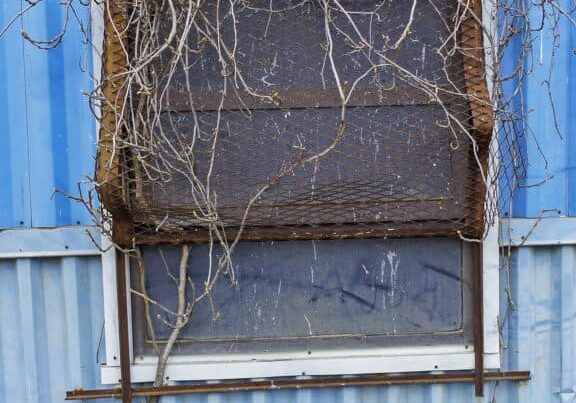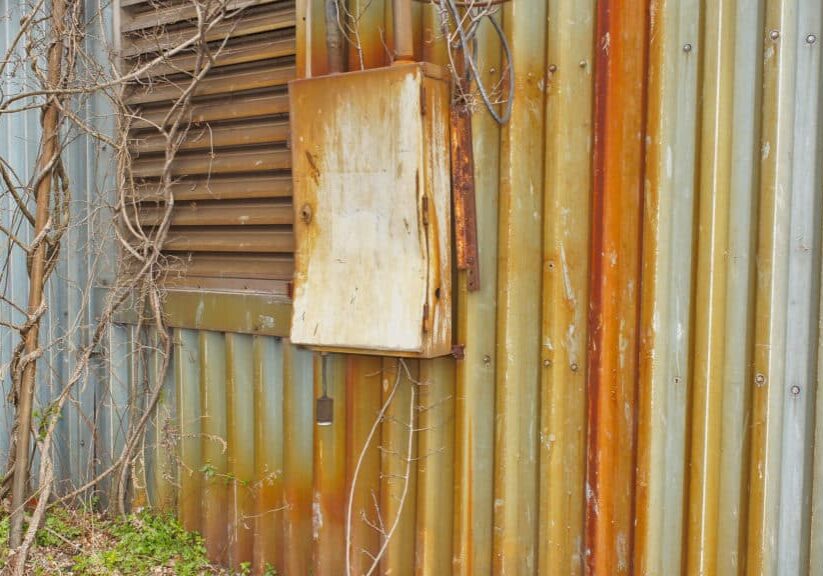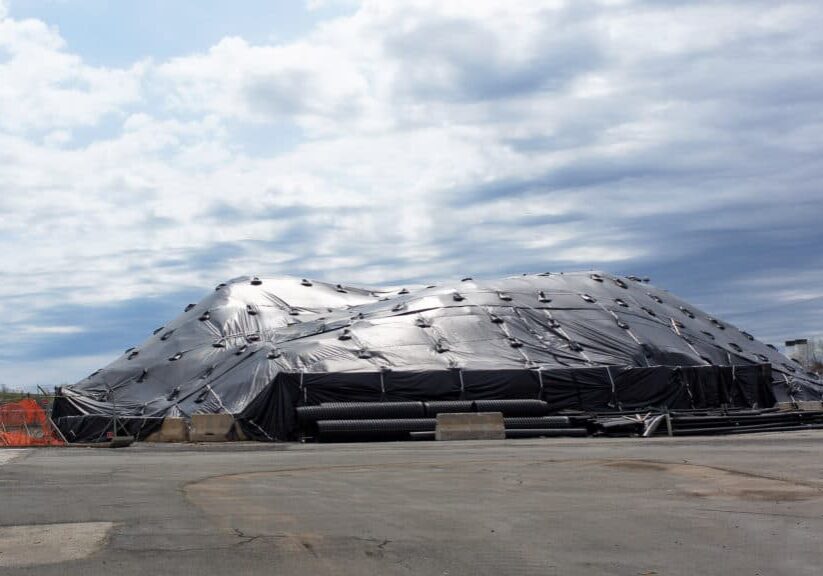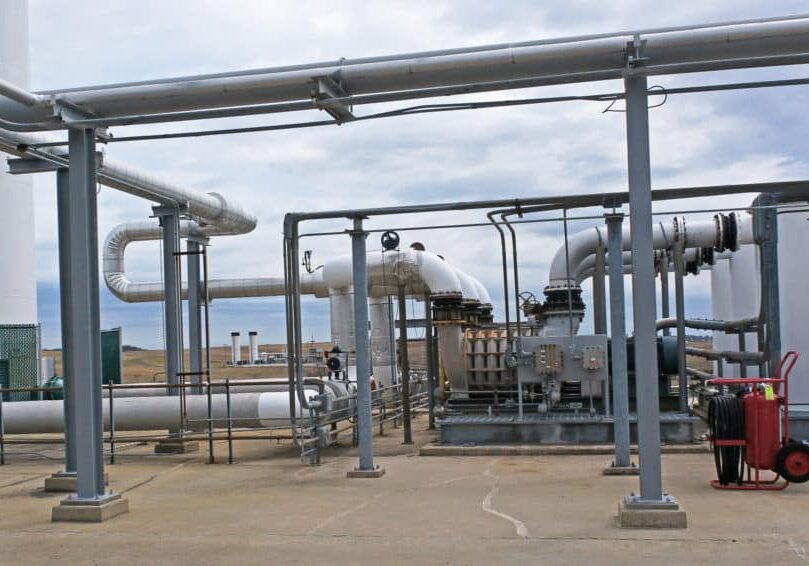Landforms and plants, April
I made these photos in April of 2017 while there were still large areas of dormant grasses covering the mounds and some plants were beginning to green, before the leaves of trees. The landforms, the grade of the garbage mounds, how roads and waterways bisect the landscape are easier to see at that time of the Spring.
Strong climbing vines from the previous summer were still brown making visible how they tangle around decaying objects of the built environment, concrete barrier blocks or rusted walls with electrical boxes. Numerous Callery pear trees bloom in April. These are so difficult to get rid of and I don’t know that that has been a gardening objective at Freshkills Park. We see blossoms hanging over a reflective liquid contained in a rusted corrugated metal form around a utility pole. This is one of my favorite pictures; it feels like a poem. I have been fond of beautiful rot for a very long time. It testifies to the power of moving air and especially water. Some call it “ruin porn.”
Along the waterway at the base of the North Mound is a staged work area. I have explored it again and again before it became restricted and the group of Capturing Change photographers were no longer permitted to explore, too dangerous (or not.) There was an office with a view across the water to the East and West Mounds. It included an old Steelcase desk like one I used to have, loose electrical powerlines, broken windows, and door hinges that squealed like horror movies. There are blue corrugated metal buildings and a rotting pier structure with huge iron dock cleats for securing lines from barges and other watercraft. In another post, I will show you the beautiful fall weeds and how several of the other photographers loved exploring this area. There was always a large pile covered thoroughly by black rubber tarps tied down by a grid of ropes with tires at the intersections. I love piles. For example, stacks of papers, chopped up vegetables, laundry. This one must be salt or sand. It is always covered up. I will look for someone to ask as I sort this all out. On the day of the pile photo, light reflects off the black rubber even as the sky is grey and clouded over, a contradiction.
Fenced inside this area is a yard full of recycling receptacles with blue or green tops. Some of them have green bags inside. Puffed up air gives them pointed tops. They are attractively designed but I have rarely seen them around New York City. It is sad to me that many people no longer believe that our culture recycles.
Because I made media for an industrial recycling company operating across the U.S. for more than ten years, I know that the U.S. collects enormous quantities of clean cardboard and paper that does get recycled into new products. This happens in both domestic and overseas mills. The U.S. mills are older and use more water than newer, better designed ones in the Far East. Some companies are able to use their cardboard boxes six times before they bale the cardboard for recycling. Cardboard fibers are recycled into new liner board, the paper outside the corrugations. Corrugated paper boxes are recycled many times before the fibers become too short to use again.
There is a reliable market for clean cardboard to make new cardboard boxes. Office paper typically becomes tissue and paper towels. There is a smaller market for plastics but HDPE, LSPE, pallet wraps, other films, and more do get recycled. Some industries participate in a huge way in very functional recycling programs. They handle far larger volumes of material than municipalities. Cities often get it wrong. Single stream recycling separates materials after they have become dirtier and so lose value as recycling commodities. So, materials that could be recycled if they were initially sorted go to landfills. Landfills are a landscape abomination that people unfortunately accepted as necessary. The cost of transporting waste to the landfill and paying to have it buried is enormous and the fuel related pollution makes it worse.
By contrast, the flare station is currently functional hardware, very neat and tidy. They burn off excess methane that is collected from the mounds. Most of it goes to heat homes on Staten Island. Anything dangerous at the flare station is carefully locked behind steel bars. In the future, I believe the plan is for the flat cement pad foundations to be used as stages for performances.

